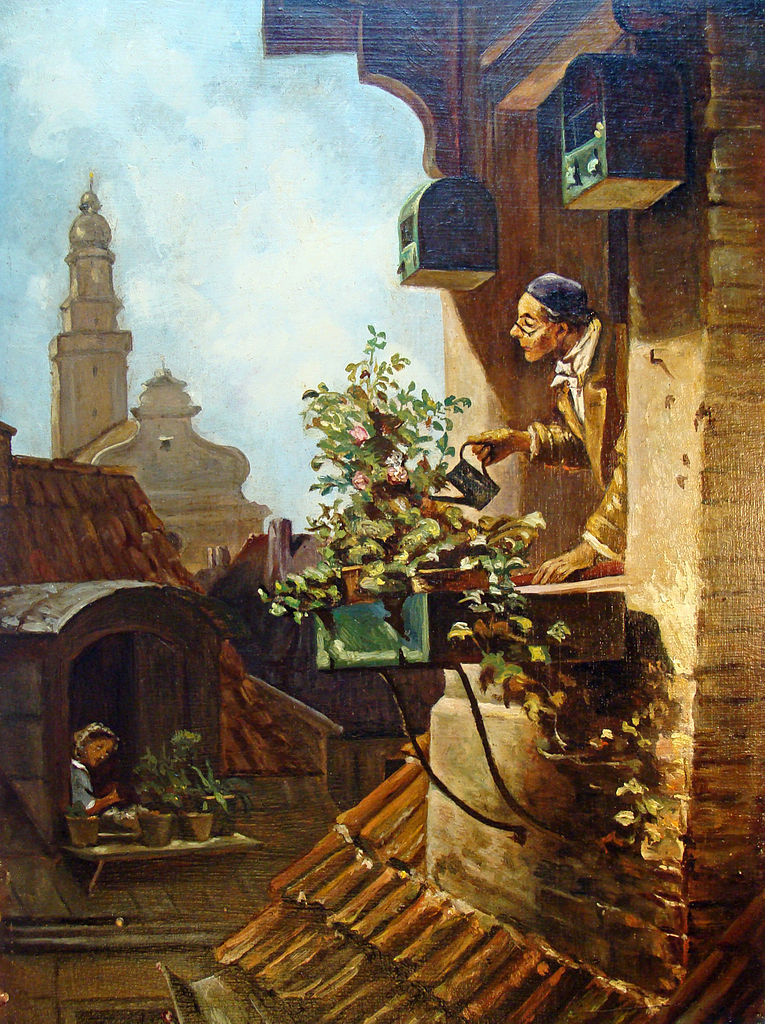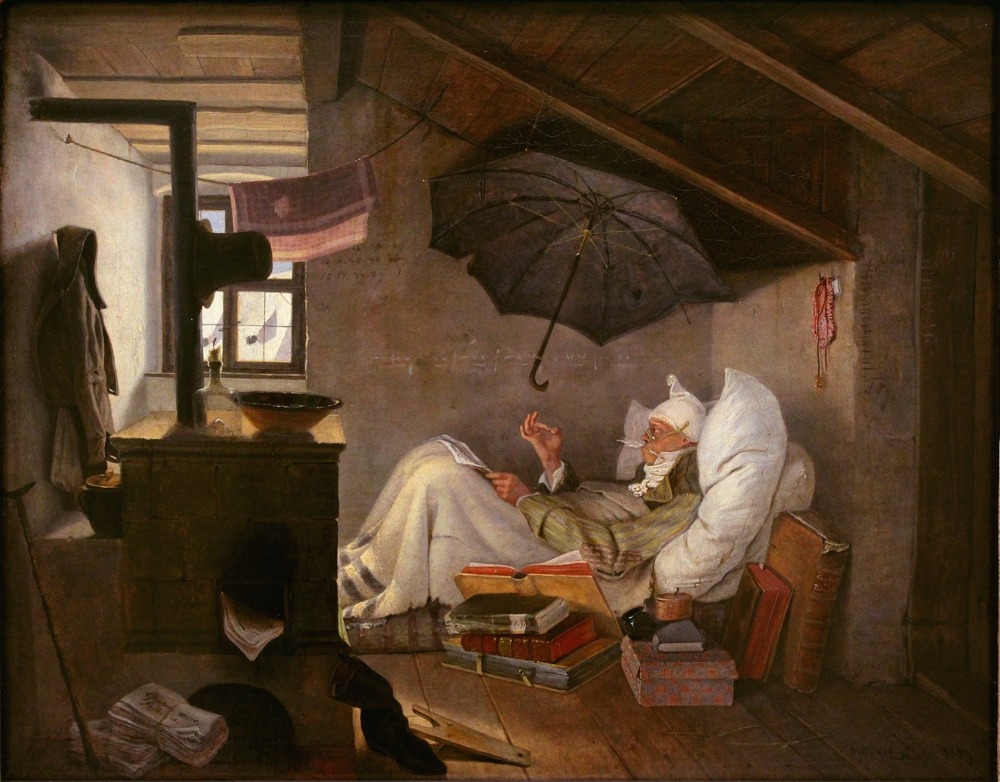Autumn is a time for wistfulness, melancholy and introspection, and also a time for one of my favourite painters Caspar David Friedrich whose Romantic landscapes perfectly fit this autumnal mood.
 Caspar David Friedrich, Memories of the Giant Mountains, 1835
Caspar David Friedrich, Memories of the Giant Mountains, 1835
These days I was listening to Depeche Mode and I especially enjoyed the song “Enjoy the Silence” which is probably their most recognisable song anyway. I also enjoyed watching the video, directed by Anton Corbijn, where the singer Dave Gaham is dressed as a king and is seen walking around through fields, meadows, beaches and mountains; all the landscapes which irresistibly bring to mind the moody landscapes of Caspar David Friedrich. The specific places in the video are the Scottish Highlands, the Algarve coast in Portugal and the Swiss Alps which beautifully showcases the beauties and diverities of European landscapes. All of these places in nature; forests, beaches, snow-capped mountains, can easily be found not only in paintings of Friedrich but also in paintings of other Romantic painters. Corbijn’s concept behind the video was that the King (Dave Gahan) represented “a man with everything in the world, just looking for a quiet place to sit; a king of no kingdom.” I think the video is a good representation of that.
Whilst gazing at the video, I suddenly remembered something that my friend had said. Years ago he had sent me the video to the song “Enjoy the Silence” and pointed at the similarity between the video’s aesthetic and the landscapes of Caspar David Friedrich. I hadn’t seen the video before he had sent it to me because I was mostly listening to Depeche Mode from my mother’s casettes, so this was something very interesting to me. These days my thoughts again turned to Depeche Mode and Friedrich and finally I felt it was the right time to tackle the topic because, as you know, I am always fond of discovering aesthetic parallels between art and rock music and poetry. I had done so previously by connecting the cover of Echo and the Bunnymen’s album “Crocodiles” (1980) and “Heaven Up Here” (1981) to Friedrich’s landscapes. I am writing this post with the memories of my friend who, although estranged from me now, will always have a place in my heart. And, interestingly, Corbijn also directed many music videos of Echo and the Bunnymen too.
Scenes from the “Enjoy the Silence” video.
In some scenes of the video, Gahan is seen as a solitary figure against the vast landscape; a transient figure passing through the ever-lasting landscapes of beauty. In some scenes he is sitting and turning his back to us, which is again something we see often in Friedrich’s art, for example in his famous painting “Moonrise Over the Sea” (1822). In the scenes filmed at the beach in Portugal the sea waves are crushing onto the sandy shore and Gahan is seen looking out at the sunset over the sea, everything painted in dusky pink and purple shades, and this romantic imagery is also seen in many of Friedrich’s beach scenes. In one scene Gahan is walking across a landscape where the tree is the only other thing in the scene and there is a tight line separating the land from the vastness of the sky. This, for example, made me think of Friedrich’s painting “Monk by the Sea” (1808-1810). I also incorporated the lyrics of the song into this post because I like them, I think they are wise and profound and they fit the mood of loneliness and isolation that Friedrich’s landscapes have.
Words like violenceBreak the silenceCome crashing inInto my little worldPainful to mePierce right through meCan’t you understand?Oh, my little girl


All I ever wantedAll I ever neededIs here in my armsWords are very unnecessaryThey can only do harm




Vows are spokenTo be brokenFeelings are intenseWords are trivialPleasures remainSo does the painWords are meaninglessAnd forgettable




















